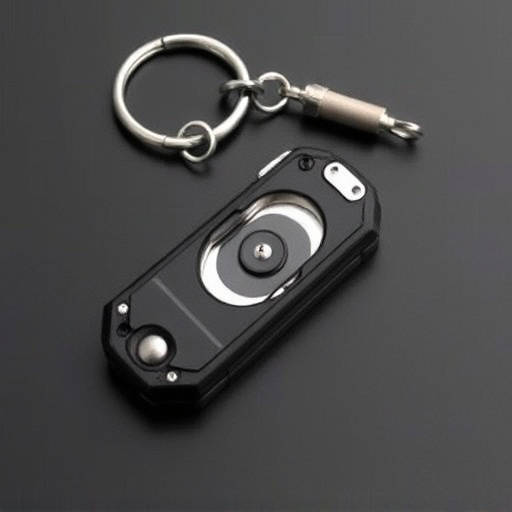Selecting metal for compact keychain self-defense tools requires balancing durability and weight. Stainless steel offers strength and corrosion resistance, while aluminum provides maneuverability and discreetness. Ergonomic design ensures a secure, comfortable grip for one-handed operation. Discreet features like matte finishes and adjustable grips make these tools blend in with everyday carry items, enhancing usability and reliability without compromising effectiveness.
“Enhance your personal safety with the ultimate guide to designing compact keychain self-defense tools. In today’s world, portability meets protection. We explore key aspects like choosing durable yet lightweight metal, optimizing grip design for comfort and easy access, discreetly integrating defense features, and achieving the perfect balance of functionality and size. Discover tips to create powerful, portable self-defense solutions that fit seamlessly into your everyday life.”
- Choosing Metal for Durability and Weight Management
- Grip Design: Ergonomics and Comfort for Easy Access
- Incorporating Self-Defense Features Discreetly
- Compact Size: Balancing Functionality and Portability
Choosing Metal for Durability and Weight Management
When designing a compact keychain self-defense tool, selecting the right metal is paramount for both durability and weight management. Opting for high-quality metals like stainless steel or aluminum ensures your device can withstand daily wear and tear while remaining lightweight. Stainless steel, known for its corrosion resistance, offers superior strength without adding significant bulk. Aluminum, on the other hand, provides excellent maneuverability and a lower overall weight, making it ideal for those seeking a more discreet self-defense option that fits comfortably in their pocket or purse.
Choosing the right metal allows you to create a durable, reliable compact keychain self-defense tool. The balance between durability and weight is crucial, ensuring your device can be easily carried without compromising its effectiveness when needed. By understanding the unique properties of different metals, designers can craft innovative tools that offer both peace of mind and practicality for users on the go.
Grip Design: Ergonomics and Comfort for Easy Access
When designing a compact keychain self-defense tool, ergonomics and comfort should be top priorities. The grip should allow for a secure and comfortable hold, enabling users to access it effortlessly in moments of need. This means selecting materials that offer a balanced blend of friction and texture, ensuring the device doesn’t slip from grasp but also isn’t uncomfortably rough.
The ideal design considers the natural curvature of the hand, aligning with the user’s palm and fingers for minimal strain. A well-designed grip should allow for one-handed operation, making it easily accessible whether in a hurry or during unexpected situations. By prioritizing ergonomics, you enhance the overall usability of compact keychain self-defense tools, ensuring they remain reliable and convenient for their intended purpose.
Incorporating Self-Defense Features Discreetly
When designing a compact keychain self-defense tool, discretion is key. The best defenses are often those that go unnoticed, allowing users to defend themselves in unexpected situations without drawing attention. Incorporate features like a sharp blade or a stun mechanism into the keychain’s form factor, ensuring it remains small and easily concealable. Opt for materials that blend seamlessly with everyday carry items, such as a matte black finish or a subtle pattern that mimics common keychains.
Consider adding adjustable grip sections that provide a secure hold but can be easily hidden beneath clothing or in pockets. The goal is to make the keychain appear unassuming while offering powerful self-defense capabilities. This balance allows users to carry peace of mind without sacrificing their ability to blend into any environment, making it an ideal choice for those who prefer to stay under the radar.
Compact Size: Balancing Functionality and Portability
When designing compact keychain self-defense tools, achieving a balance between functionality and portability is paramount. These tiny gadgets are meant to be easily carried in pockets or attached to keys, so their size should not compromise their effectiveness. A good rule of thumb is to aim for a design that allows users to perform essential self-defense maneuvers while keeping the overall profile minimal.
This means integrating robust materials and reliable mechanisms without making it bulky. For instance, utilizing high-strength alloys and innovative folding blades can maximize both space efficiency and functionality. The goal is to create compact keychain defense tools that offer peace of mind without sacrificing convenience for users on the go.
When designing a compact keychain self-defense tool, prioritizing durability and functionality is key. By selecting the right metal for both weight management and longevity, incorporating ergonomic grip designs for comfortable access, and discretely integrating self-defense features, you can create an effective yet portable device. Remember, balance is crucial; ensuring your keychain is small enough to carry conveniently without compromising its ability to serve as a valuable self-defense mechanism.
